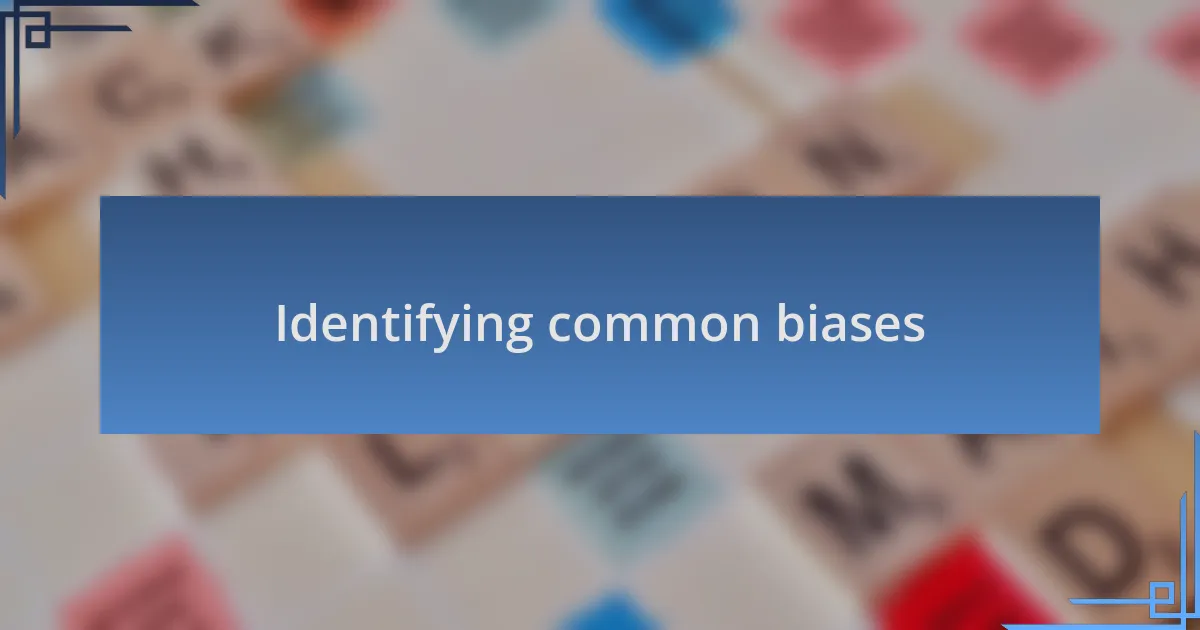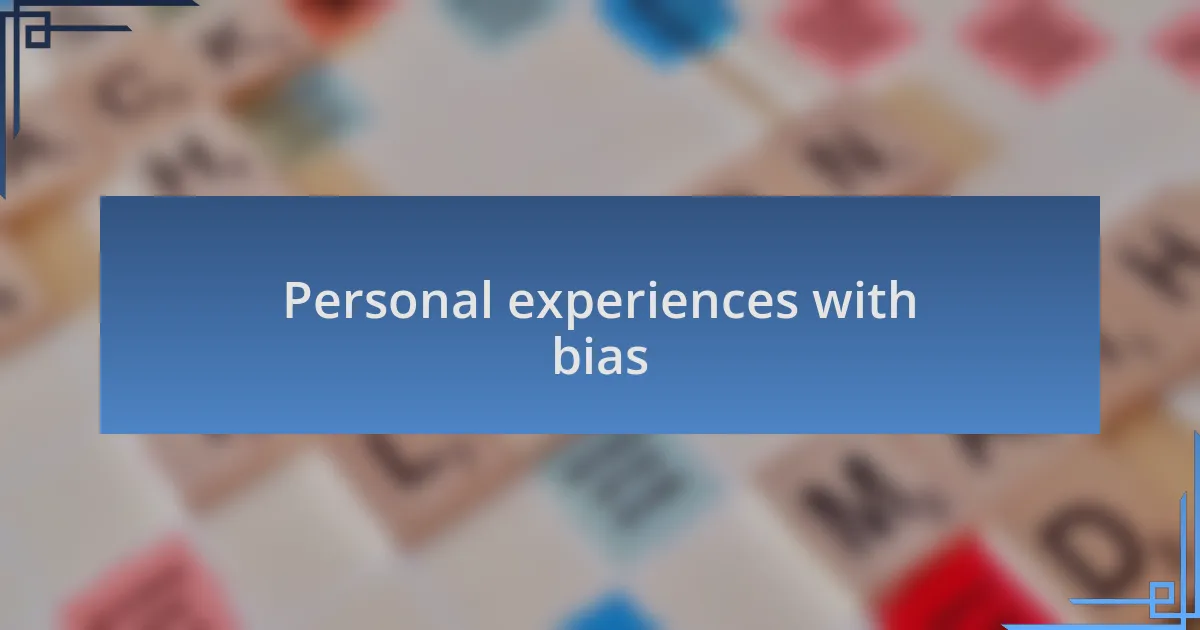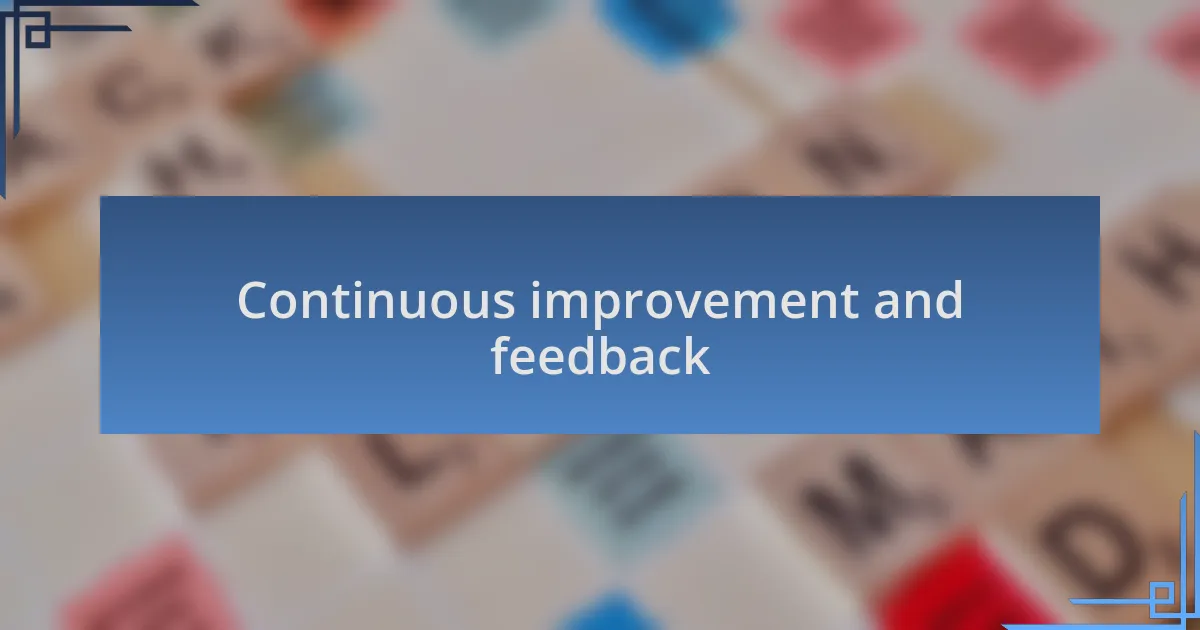Key takeaways:
- Assessment bias can hinder recognition of a learner’s strengths, especially for individuals with learning differences like dyslexia.
- Dyslexia training equips educators with strategies to support diverse learning styles, fostering empathy and better classroom environments.
- Implementing diverse assessment methods and fostering collaboration among students can reveal hidden talents and reduce bias.
- Continuous feedback from students is essential for refining assessment practices and ensuring inclusivity in education.

Understanding assessment bias
Assessment bias refers to the discrepancies that can arise in evaluating a learner’s abilities, often influenced by preconceptions or stereotypes. I remember when I first encountered a student struggling with dyslexia, and my instinct was to focus on their reading difficulties rather than their unique strengths. It makes me wonder—how often do we unknowingly let our biases shape our perceptions of someone’s potential?
This kind of bias can be particularly detrimental for individuals with learning differences, like dyslexia, as it may overshadow their creativity or problem-solving skills. Once, I overlooked a brilliant idea from a dyslexic student simply because I was fixated on their written expression. Have you ever found yourself making similar judgments? It highlights how crucial it is to recognize these biases and actively work to set them aside during assessments.
Moreover, understanding assessment bias isn’t just about recognizing its existence; it’s about finding ways to mitigate its impact. I’ve found that incorporating holistic assessment methods, such as project-based evaluations, allows for a more comprehensive view of a learner’s capabilities. This approach prompts me to reflect on how we can celebrate diverse talents while ensuring that assessments genuinely capture a student’s knowledge and skills.

Importance of dyslexia training
Dyslexia training is vital because it equips educators with the tools to recognize and address the unique learning styles of their students. I recall a workshop where I learned about specific teaching strategies tailored for dyslexic learners, like the Orton-Gillingham approach. It was eye-opening to see how these methods transformed not just reading skills but also boosted confidence in students who previously felt defeated.
Moreover, this training fosters empathy and understanding among educators, enabling them to support students more effectively. One time, after receiving training, I was better prepared to assist a quiet student who had been hesitant to participate in class. It reminded me that building a supportive environment goes beyond academic skills; it’s about nurturing their emotional well-being. Have you ever noticed how a little encouragement can spark a big change?
Finally, dyslexia training has the potential to change the narrative surrounding learning differences. I’ve seen firsthand how informed teachers can challenge stereotypes and promote an inclusive culture in the classroom. It’s encouraging to think about the lasting impact this can have—not just on individual students, but on society as a whole. How can we continue to advocate for this essential training and ensure all educators feel equipped to make a difference?

Identifying common biases
Identifying biases in assessment requires a keen eye. One common bias I’ve encountered is the expectation that all students should progress at the same pace. During one of my training sessions, a colleague shared a heartbreaking story of a bright student whose talents went unnoticed because they struggled with traditional reading tests. This made me realize how easy it is to overlook individual strengths when we solely focus on standardized measures.
Another prevalent bias is the tendency to equate academic performance with intelligence. I once observed a teacher dismiss a student’s exceptional creative abilities because they weren’t reflected in a written exam. This experience underscored the importance of diverse assessment methods. Have you considered how different assessments can showcase various talents?
Lastly, confirmation bias can subtly creep in when we anticipate certain outcomes based on our experiences or beliefs about dyslexia. I found myself initially doubting a student’s progress simply because they didn’t fit the existing mold of improvement I had seen in others. Reflecting on this taught me to recognize and check my biases, reminding me that every learner is unique. How often do we challenge our own preconceived notions in the learning environment?

Strategies to address bias
Strategies to address bias begin with a conscious effort to diversify assessment techniques. I vividly remember a workshop where we experimented with project-based learning. I was amazed to see how one student, who had always struggled on paper, thrived when given the opportunity to express their knowledge through a creative presentation. It made me wonder—could switching up our assessment methods lead to more students shining in their own unique ways?
Another effective strategy is fostering a collaborative learning environment. In my experience, forming small groups can help mitigate biases, as students often gain insights from their peers. I recall a time when a group project revealed a student’s hidden strengths, surprising both myself and their classmates. It raised a compelling question: how often do we underestimate the power of collaboration in revealing potential?
Finally, training self-awareness among educators is crucial. During a recent training, I guided a session on recognizing personal biases in assessment. I encouraged participants to share their experiences, and collectively, we identified how our beliefs could inadvertently influence our expectations. It was a powerful reminder—when we are conscious of our biases, we can create a more equitable learning environment for all students.

Implementing inclusive assessment practices
Implementing inclusive assessment practices begins with offering various formats for students to demonstrate their understanding. I remember working with a student who struggled with traditional testing but excelled when allowed to submit a video report of his findings. Watching him light up when presenting his work made me realize how vital it is to recognize different strengths—what are we missing by not offering these options more broadly?
Another key aspect is providing clear instructions and support tailored to individual needs. An instance that stands out to me involved a student who felt overwhelmed by complex instructions during an assessment. Upon simplifying the language and breaking down the tasks into manageable steps, I saw a shift in her confidence and performance. Could it be that many students are capable but simply lack the clarity needed to showcase their skills?
Finally, it’s important to regularly reflect on the assessment tools we use. In my practice, I conduct periodic reviews of my assessment criteria to ensure they align with an inclusive ethos. I once discovered that some rubrics favored certain learning styles unconsciously; adjusting those criteria opened pathways for all students. How many opportunities for growth do we overlook merely due to outdated practices?

Personal experiences with bias
As I reflect on my experiences, I recall a student who faced bias during group assessments. I noticed how his peers often overlooked his contributions because he processed information differently. It was disheartening to watch him retreat into silence, highlighting how social dynamics can skew perception and undervalue a student’s unique insights.
In another instance, I administered a reading comprehension test that inadvertently favored faster readers. I had a bright student who had dyslexia; he struggled under pressure and felt disheartened by his performance. Seeing his frustration reminded me that our assessments often reflect more about our expectations than about a student’s true abilities—how can we shift our perspectives to celebrate diverse strengths instead?
I once attended a workshop where we discussed implicit biases in assessment practices. The conversations were eye-opening, revealing how assumptions can influence grading. This motivated me to examine my own biases and how they might impact students’ experiences—what other biases might I not even be aware of that could hinder someone’s potential?

Continuous improvement and feedback
When it comes to continuous improvement, I often find that open lines of communication with students are essential. I remember one term when I implemented regular feedback sessions after assessments. This not only helped me understand their learning experiences but also provided them a platform to voice their concerns and suggestions. It was enlightening; I learned that many students appreciate a chance to discuss the assessment criteria openly, which in turn helped refine my strategies.
I also encourage my colleagues to embrace a culture of constructive feedback. I recall a team meeting where we collectively reviewed past assessments and discussed how they might unintentionally favor specific learning styles. The conversation sparked ideas for revising our evaluation methods. How can we make our assessments more inclusive and reflective of all learners’ strengths?
Embracing a mindset of continuous improvement means examining our practices regularly. I once created a survey to gather anonymous feedback from students after each major project. The insights were invaluable! I was surprised by how often they highlighted stress as a barrier to showcasing their knowledge. Understanding this prompted me to make adjustments, like incorporating flexible timelines for future assessments, reinforcing the idea that feedback isn’t just useful—it’s necessary for growth and better outcomes.